These are some of the birds common to our yard in the winter. I’m somewhat disappointed that we haven’t had another bird or two that is rarer, but these birds give me plenty to do with their presence. The first five birds appearing below, despite their names, are all members of the sparrow family.
This is our most consistent, common bird that visits the yard in the winter… a Dark-eyed junco. There are several different ‘races’ of Dark-eyed juncos, and this is one of the Oregon race. For the past many years we have had one of the Slate-colored race juncos spend the winter in the yard but this year it didn’t appear. Juncos are primarily ground feeding seed eaters. While some have learned to access hanging seed and suet feeders, they mainly feed on the ground.
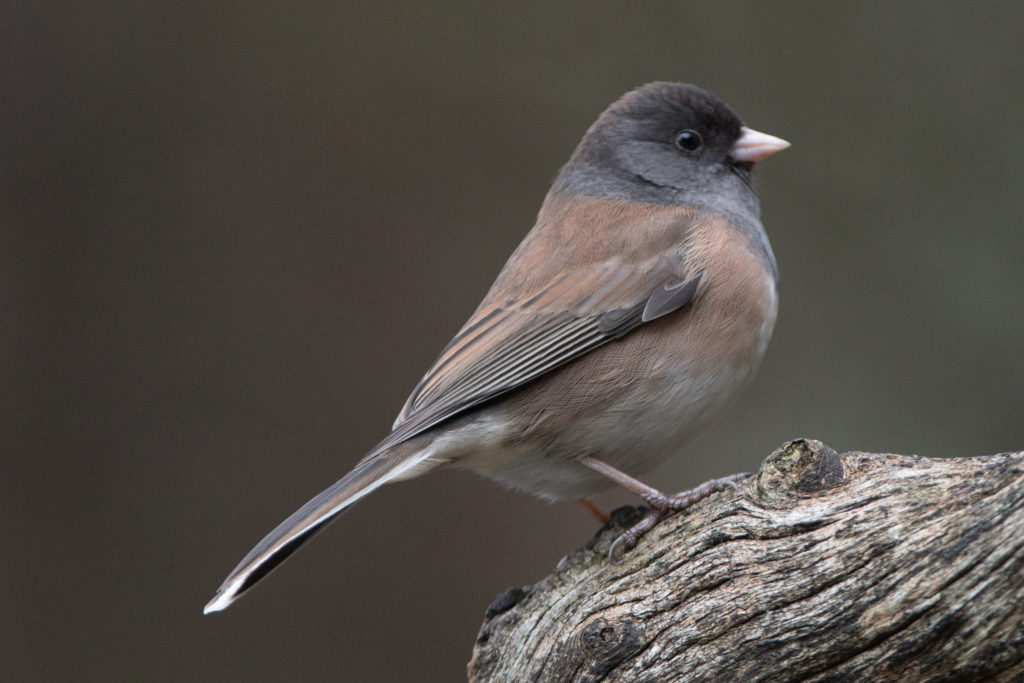
This Spotted towhee also a consistent visitor, but in this case it’s here year round. We usually only have one pair in the yard but this winter I’ve counted up to five individuals. We’ve had a pair breed in the area for the past several years but in some years cowbirds have parasitized the nest and the towhees have raised cowbirds. : (
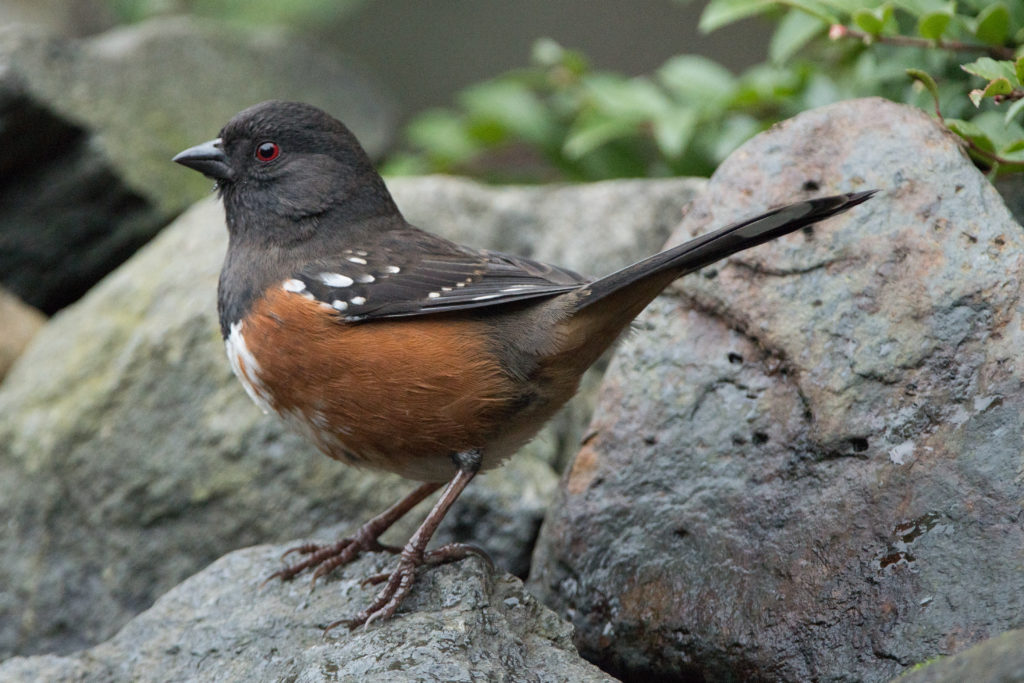
This Song sparrow is another year round visitor and another ground feeder. We never have more than one or two in the yard at any one time.
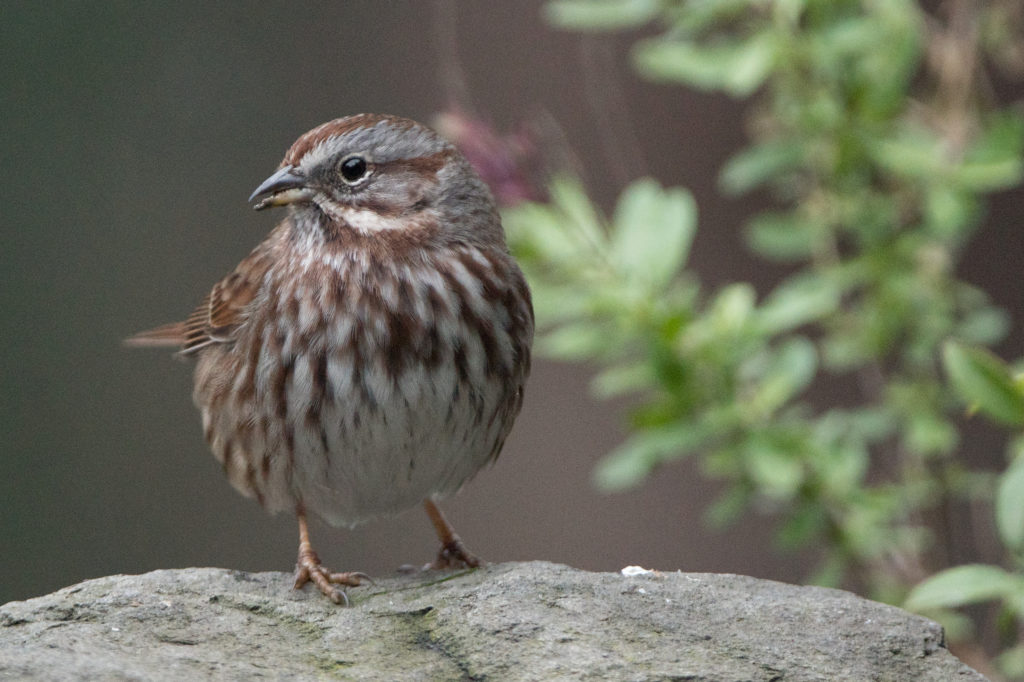
We usually have only one Fox sparrow in the yard in the winter… and none in other seasons. I think many non-birders or beginning birders are often confused between the Fox sparrow and its ‘cousin’, the Song sparrow pictured above. Like its cousin, it’s a seed eater found on the ground. Note the absence of a distinct head pattern as compared with the Song sparrow. The Fox sparrow will often scratch in the leaf litter with both feet at the same time, jumping up in the air while scratching quickly with both feet.
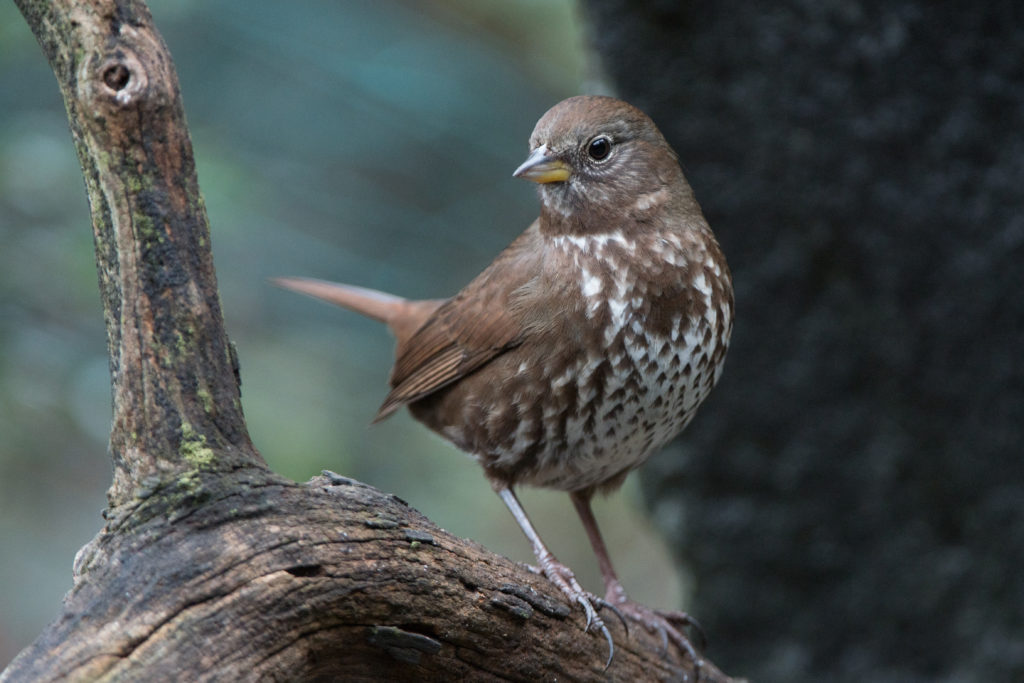
The following bird, and the last member of the sparrows I’ve pictured, is a Golden-crowned sparrow. This sparrow is only a winter visitor, leaving in late spring for breeding grounds east of the Cascades and far north of us. My guess is that this is a male judging by the brightness of its crown.
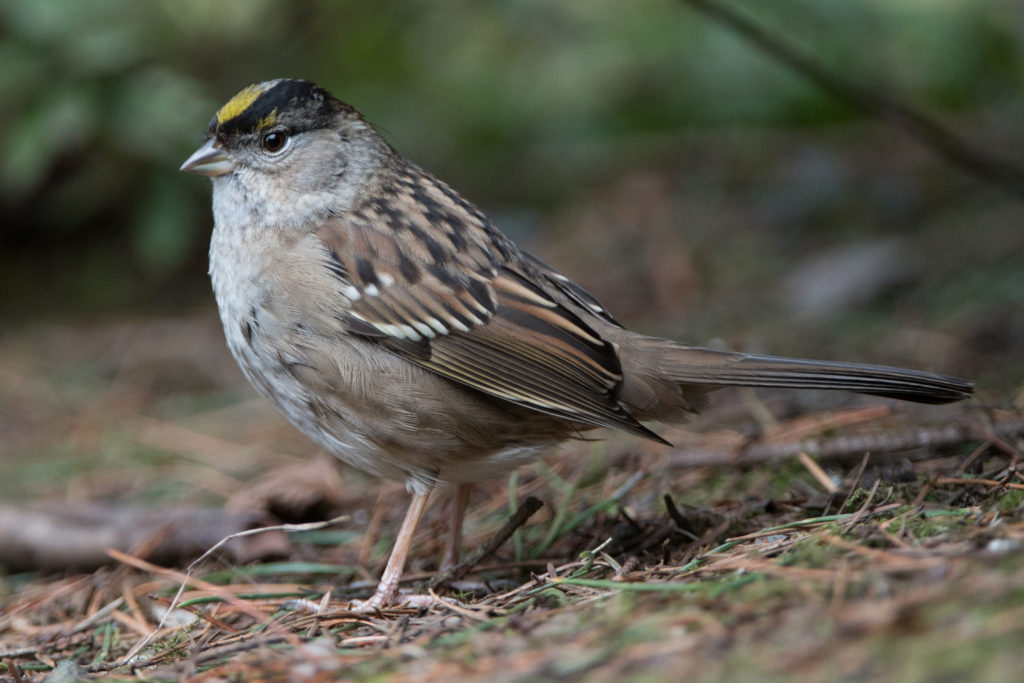
This small bird is a Golden-crowned kinglet, primarily an insect eater. It is attracted to water in the yard rather than feeders, loving to bathe in shallow water. Considering the size of the bird and the temperature of the water in the winter, it seems an odd practice. It’s tempting to identify this bird as a female, but from this angle it would be almost impossible to see a possible red crown down the middle of the gold crown which would indicate it is a male.
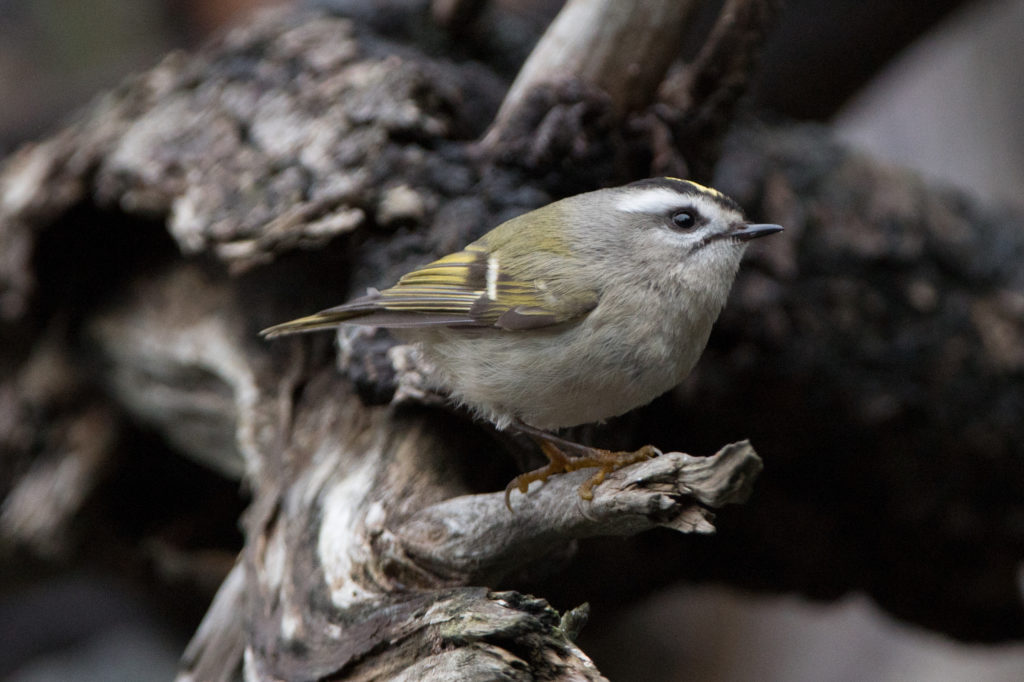
This is a female Bushtit, a bird even smaller than the kinglet. This bird is extremely gregarious and in non-breeding season travels in flocks of 10-25 birds, ‘rolling’ through underbrush and never remaining in one location for more than a few minutes. While they will eat seeds, their favorite winter yard food is suet. It’s not unusual to have a dozen or more birds hanging from a suet feeder at one time. How can you tell this bird is a female?
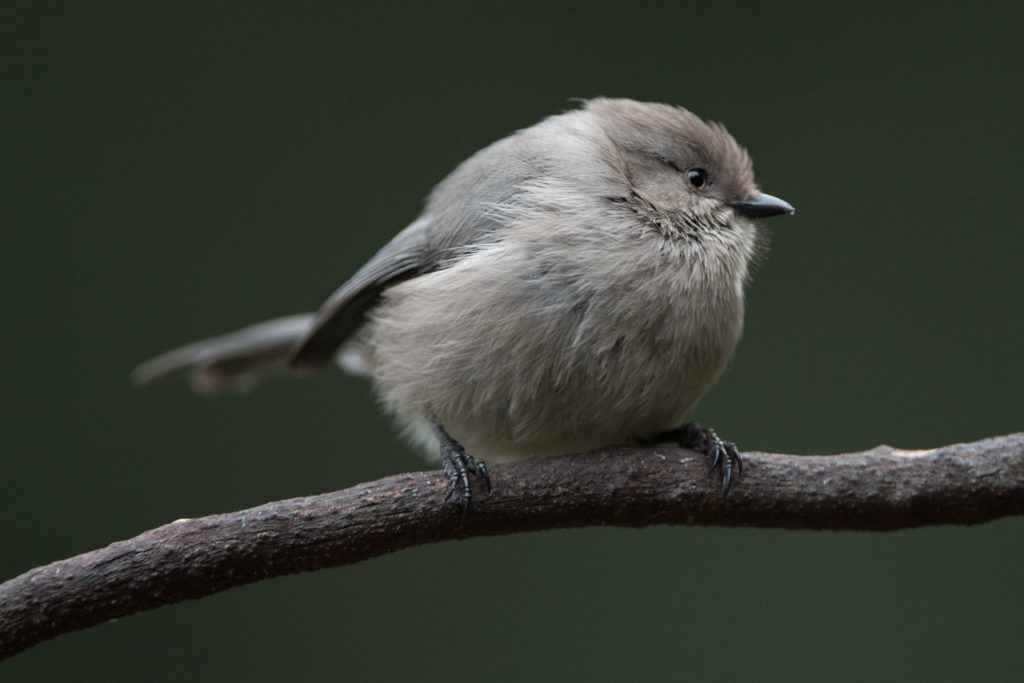
UPDATE: I spent some time in the yard this afternoon (1/24/2020) and while I was there the Bushtits happened by. To illustrate their gregariousness that I mentioned previously in this post, I took this photo. I count 17 on the feeder, and there is another feeder in the yard that might be just as full.
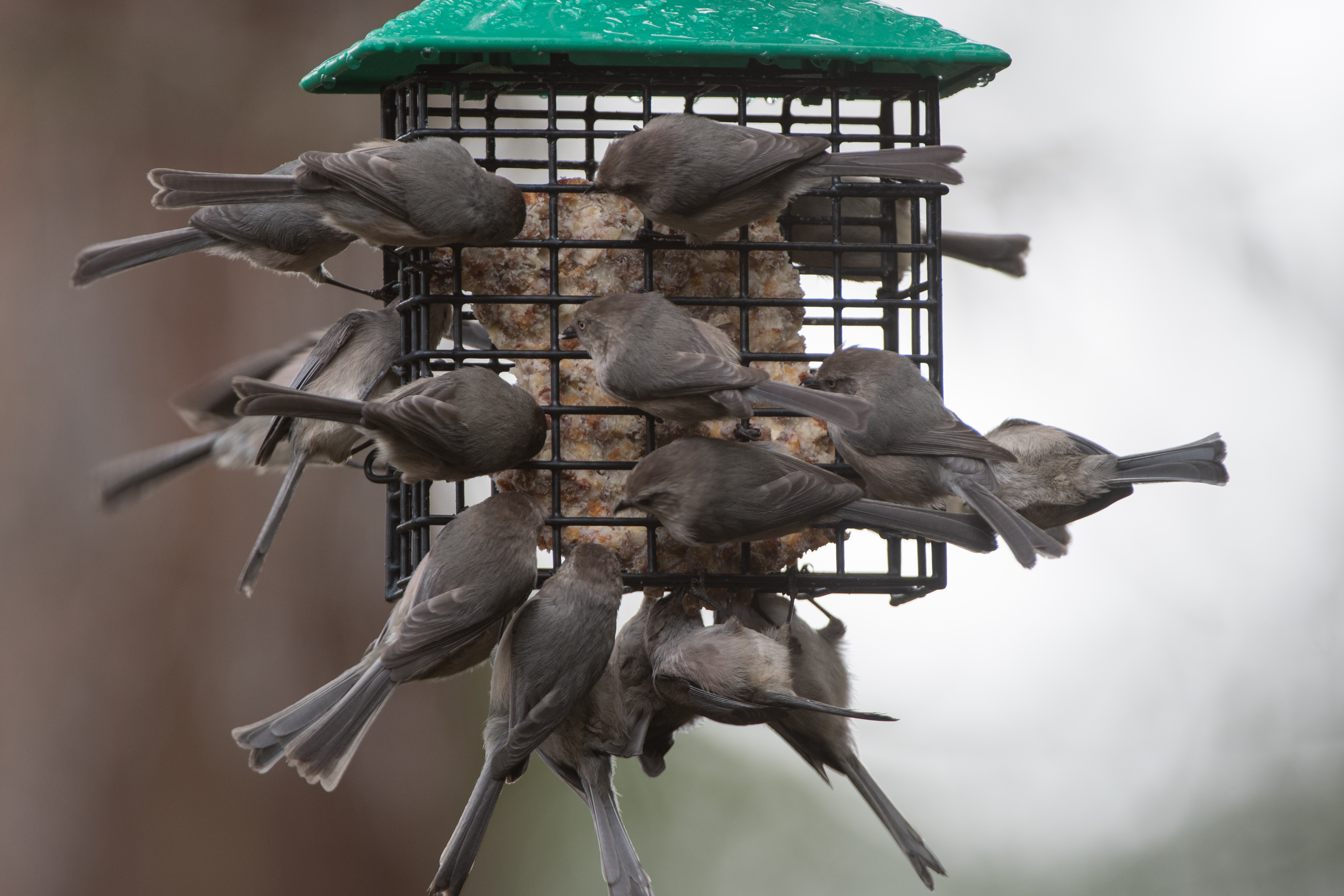
This next bird is a female Anna’s hummingbird, our only hummingbird here in the winter.
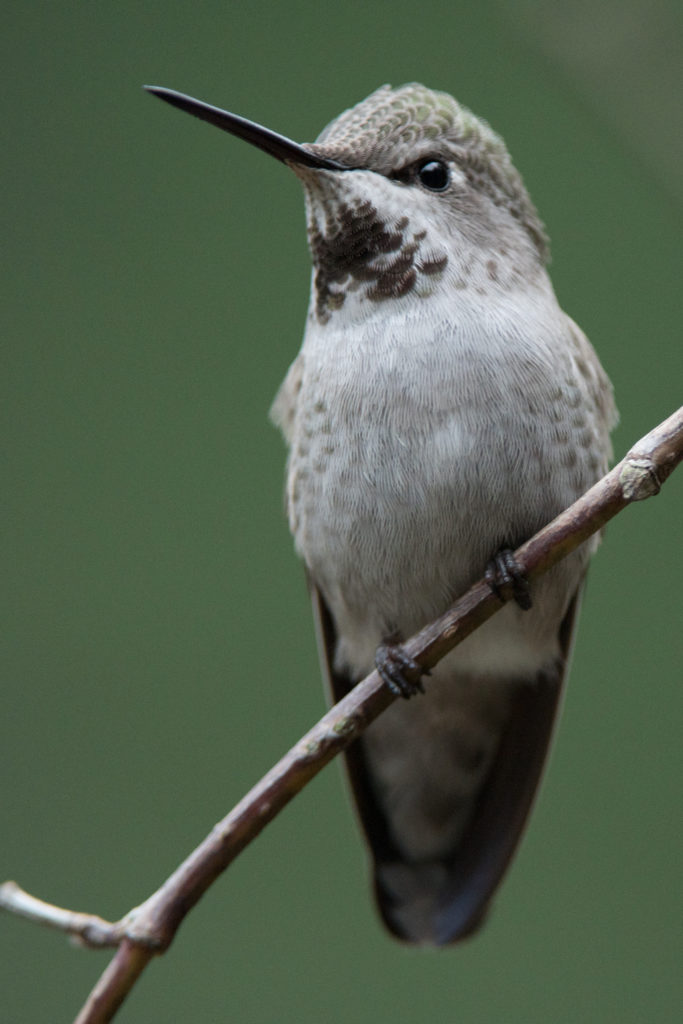
This next bird, a Bewick’s wren, is a year-round resident but one we see primarily in the winter. I don’t usually post photos of birds on feeders, but because of the unusualness of this bird’s practice I’m making an exception. The wren is an insect eater and usually forages in the bushes and leaf litter for insects. This winter we have at least one in the yard that has discovered our suet feeders, so it’s been a fairly regular visitor at all three of our suet feeders.

Both of our other suet feeders are inverted, ie, the roof is on the top of the feeder and the birds must access the feeder from underneath. This discriminates against non-clinging birds (sparrows, finches, etc,) which can eat a lot of suet and, in my opinion, are less desirable visitors. And while I’m on my soapbox, purchase the highest nutrition suet you can find. The first ingredient on the label should be rendered suet and the next ingredient should be some form of peanuts. Read the labels… the nutritious suet often costs no more than other formulations that feature fillers (corn, millet, etc.). The real adventure is in comparing the small print on the labels!
This last bird is a female Varied thrush, down from the mountains due to snow obstructing its feeding sources. We’ve also had at least one male in the yard, but it’s been a much less frequent visitor than the female. Many years ago during an extended period with snow on the ground we had what I estimated as about 25 in and around the yard. Those days are long gone! This bird, like its cousin the American robin, is an insect and berry eater. A big mystery to me is despite the two birds’ similarities, the robins will not eat seed and yet the thrush is very happy to do so. Go figure!
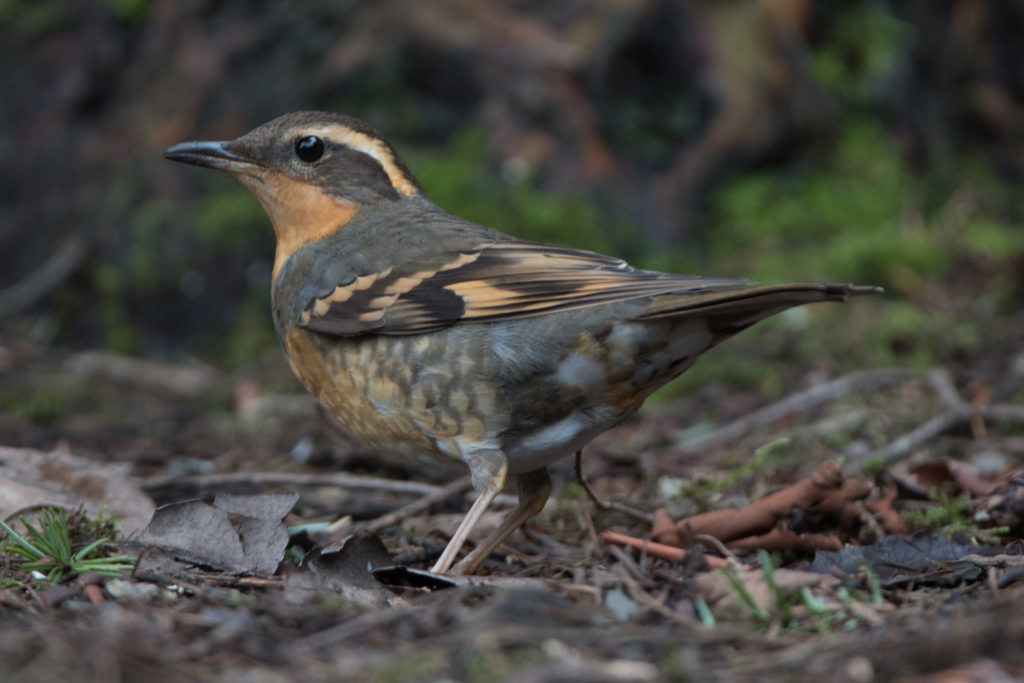
I should mention that when I characterize a bird as a seed eater, I am referring to what is probably the bird’s primary diet, especially in winter months when feeders are present. It’s a rare bird that will ignore an insect find. (I recently took photos on Fir Island of a Song sparrow eagerly devouring a worm it had discovered.)
We have a lot of other year-round yard visitors here in the winter that I didn’t feature, including nuthatches, two species of chickadees, creepers, members of the woodpecker family and others.
